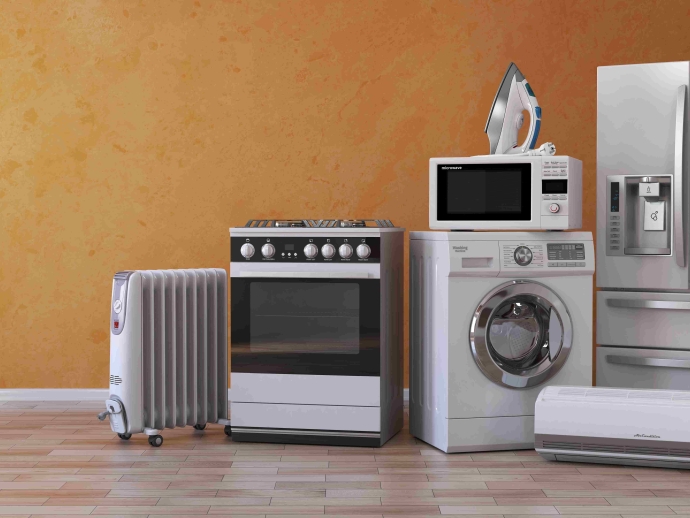Hidden Energy Vampires: 10 Common Household Devices Draining Your Wallet

In many homes, there are devices that secretly consume electricity even when they appear to be turned off. These "energy vampires" can significantly increase your energy bills and contribute to unnecessary greenhouse gas emissions. Identifying and managing these devices is crucial for reducing energy waste and saving money. Here are ten common household devices that might be draining your wallet, along with practical solutions to combat them.
What Are Energy Vampires?
Energy vampires are devices that continue to use electricity even when they are not in active use. This phenomenon is also known as standby power or phantom energy. Common culprits include electronics with built-in clocks or digital displays, devices that remain in standby mode to receive signals, and appliances with continuous power needs for functions like temperature monitoring or signal reception.
10 Common Household Energy Vampires
Energy vampires are electronic devices and appliances that consume electricity even when they’re not in active use. Although the power consumption may seem minimal, over time, it can significantly increase your energy bills. Here are ten common household energy vampires you should be aware of:
-
Televisions and Video Game Consoles
Many modern TVs and gaming consoles enter standby mode instead of shutting down completely when turned off. In this mode, they continue to draw power to maintain connectivity, receive updates, and be ready for instant use. Some models also consume energy to power features like voice-activated assistants or quick-start options. To minimize this, consider using a power strip to completely cut off power when these devices aren’t in use.
-
Phone and Laptop Chargers
Chargers for smartphones, laptops, and other devices continue to draw power even when they’re not actively charging. While the energy consumed by a single charger may be small, it adds up when multiple chargers are left plugged in around the home. Unplugging them after use or using smart plugs that automatically cut power can help reduce this unnecessary energy consumption.
-
Coffee Makers and Microwaves
Small kitchen appliances like coffee makers and microwaves often feature digital clocks and displays that stay on even when the appliances are not in use. This standby power consumption, while small per device, can add up, especially if you have several appliances plugged in simultaneously. Unplugging them when not needed or using energy-efficient models can help save energy.
-
Computers and Monitors
Desktop computers, laptops, and monitors often continue to draw power when left on standby or sleep mode. Some devices also use energy to power USB ports for charging other devices. Shutting down your computer completely and turning off monitors after use, or setting them to enter low-power modes, can reduce wasted energy.
-
Thermostats and HVAC Equipment
Smart thermostats and HVAC systems require continuous power to monitor indoor temperatures, maintain settings, and enable remote access. While these systems improve energy efficiency by regulating your home’s climate, they still contribute to standby energy consumption. Regular maintenance and efficient programming can optimize their energy use without sacrificing comfort.
-
Toaster Ovens and Other Small Kitchen Appliances
Appliances such as toaster ovens, blenders, and slow cookers may continue to draw power when plugged in, especially if they have digital displays or electronic controls. Although each device may consume a small amount of electricity, the cumulative impact can be significant. Unplugging these appliances when they’re not in use is a simple way to reduce energy waste.
-
DVD Players and Stereos
Many DVD players, stereo systems, and home theater equipment remain in standby mode, using power to receive signals from remote controls. This convenience comes at a cost—continuous power consumption. Using power strips for your entertainment center allows you to switch off multiple devices at once when they’re not in use.
-
Cable Boxes
Cable and satellite TV boxes are among the most power-hungry energy vampires in the home. Even when turned off, they continue to draw power to maintain program guides, update software, and remain ready to record scheduled shows. Opting for energy-efficient models or unplugging them when not needed can significantly reduce power usage.
-
Internet Phones
Voice over Internet Protocol (VoIP) phones and similar communication devices stay powered to ensure they can receive calls and messages at any time. While essential for connectivity, these devices continuously draw energy. If constant availability isn’t necessary, consider unplugging them or using low-energy alternatives.
-
Hairdryers and Hair Straighteners
While hairdryers and styling tools like straighteners and curling irons aren’t typically considered energy vampires, they can still consume electricity if left plugged in. Some models with indicator lights or instant-heat features may draw small amounts of power. Always unplug these devices after use to prevent energy waste and potential safety hazards.
Practical Solutions to Combat Energy Vampires
-
Unplug Unused Devices: The simplest way to eliminate energy vampires is to unplug devices when not in use. This is especially effective for items like chargers, coffee makers, and small kitchen appliances.
-
Use Power Strips: Plugging multiple devices into a single power strip allows you to cut power to several electronics at once with a single switch. This is ideal for home entertainment systems or computer setups.
-
Invest in Smart Plugs: Smart plugs can be programmed to turn off at specific times or controlled remotely, giving you added flexibility in managing energy vampires.
-
Replace Old Devices: Newer devices often have lower standby power consumption. Consider upgrading to more energy-efficient models when possible.
-
Educate Family Members: Encourage everyone in the household to be mindful of energy vampires and to unplug devices when not in use.
Conclusion
Energy vampires are a common issue in many households, contributing to higher energy bills and environmental impact. By identifying these devices and implementing simple strategies like unplugging unused devices, using power strips, and investing in smart plugs, homeowners can significantly reduce energy waste and save money. Awareness and proactive management are key to slaying these hidden energy drains and creating a more sustainable living environment.

